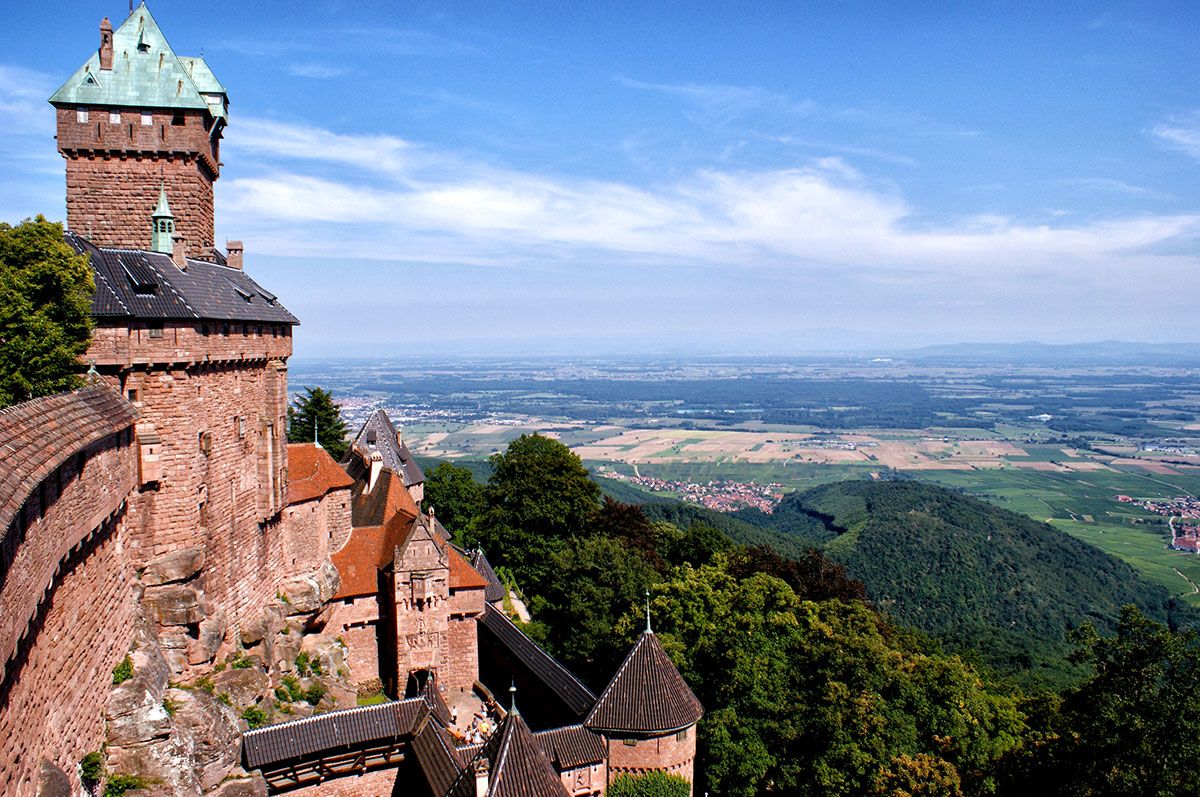Perched 757 meters high, the Haut-Koenigsbourg castle is one of the must-sees castles near Strasbourg. It's located less than an hour's drive from Strasbourg and is easily accessible by train and shuttle!
From the top of its mountain, the Haut-Koenigsbourg castle is eye catching as soon as you approach Sélestat. It offers a fantastic view on the plain of Alsace and sometimes even up to the Alps by clear weather.
The Haut-Koenigsbourg castle has also been used as a film location for several movies (such as La grande illusion by Jean Renoir) and documentaries. It has even inspired the Lord of the Rings and Miyazaki.
Learn more about the history of the Haut Koenigsbourg castle and practical information for the visit!
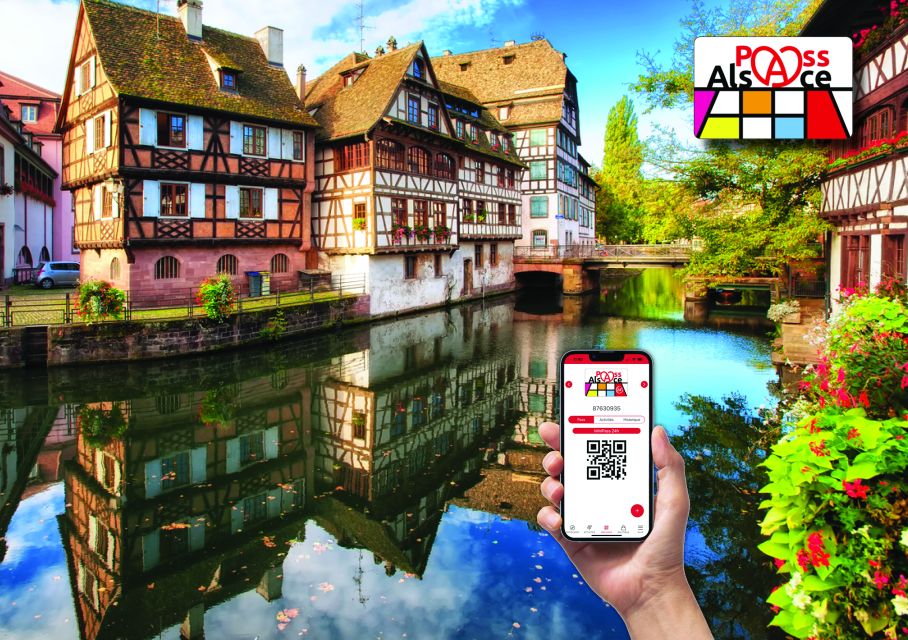
Pass Alsace : The Best of Alsace in your Pocket
Enjoy free entry to over 60 tourist sites, including wildlife parks, fortified castles, museums, and more fun activities and discounts in Alsace.
A medieval fortress that became imperial
Built in the 12th century in the middle ages, the Haut-Koenigsbourg castle has had several lives until it became the most visited historical site in the Grand Est.
The oldest known mention of the castle dates back to 1147. It belonged to the Hohenstaufen dynasty, that built a multitude of castles in Alsace to assert its power and ensure control of the Holy Roman Empire. From the top of its 757 meters high, the castle of Haut-Koenigsbourg is a remarkable observation and defense post. It became a royal castle with Frederick Barbarossa. It then underwent numerous fortification works in the 15th and 16th centuries.
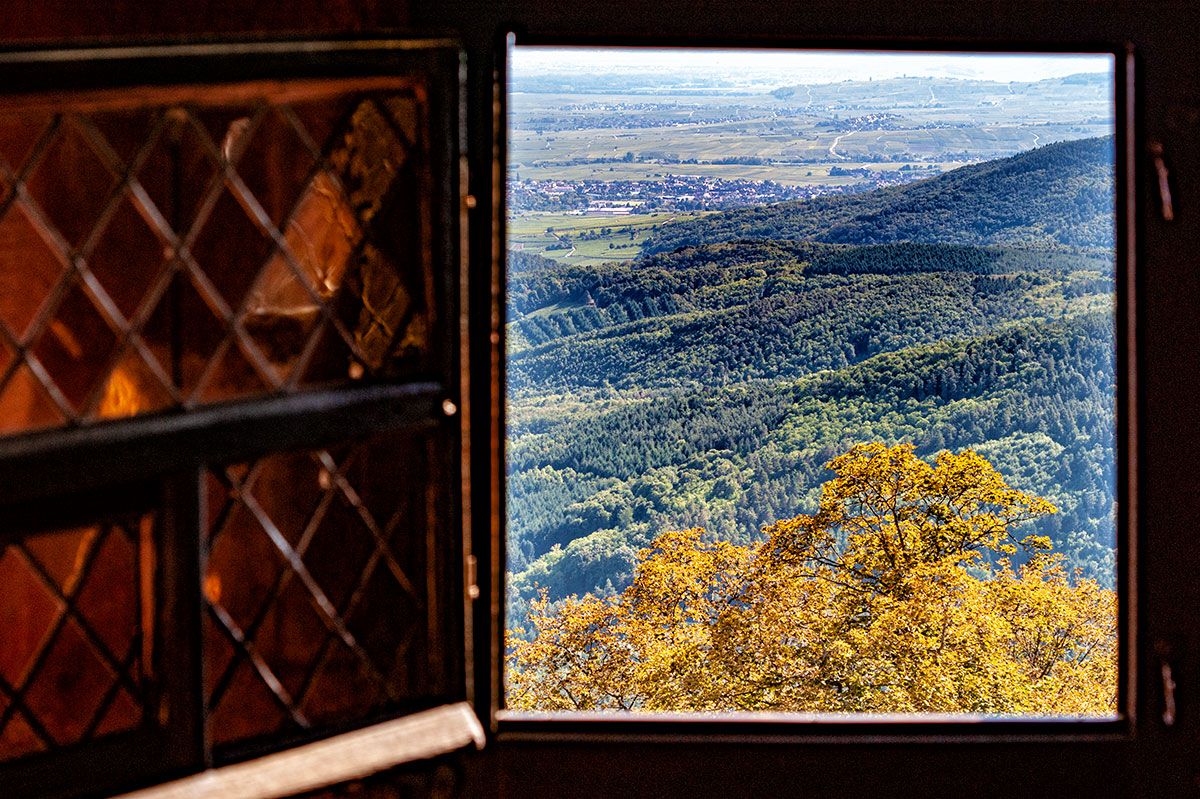
The Haut-Koenigsbourg reduced to ruins and abandoned
During the Thirty Years' War (1618-1648), Alsace was at the heart of a conflict between the Catholic Habsburgs of Spain and the Holy Roman Empire and the Protestant German states. The Haut-Koenigsbourg castle was destroyed in 1633 by the Swedes, allies of France and the Protestant states, after a 52-day siege and then by fire.
At the end of the war and following the treaties of Westphalia, Alsace gradually became French, as did the castle. Ruins are left abandoned for almost two centuries. In 1862, they were classified as a historical monument and progressively bought by the city of Sélestat which offered them in 1899 to the German Emperor Guillaume II after the annexation of Alsace in 1871.
The historical reconstruction of the castle of William II by Bodo Ebhardt
The ruins of the castle of Haut-Koenigsbourg marked the western limit of the German Empire and, perched on their mountain, they enjoyed an important visibility from the plain of Alsace. The Emperor then decided to completely restore the castle to make it a symbol of his power and a museum. He entrusted the task to the Berlin architect and archaeologist Bodo Ebhardt, a specialist in medieval fortifications. Ebhardt carried out extensive studies of documents, archaeological remains and architecture in order to restore the castle to the state it was in around 1500.
The work lasted from 1900 to 1908, using state-of-the-art technology for the time. A small locomotive transports the blocks of stone. The water supply of the construction site was ensured by a pumping station built especially for the occasion and which was classified as a historical monument in 1991. Finally, two electric cranes were used for lifting and handling.
After the First World War, the castle became the property of the French state. It was classified as a historical monument in 1993 and then transferred to the Bas-Rhin department in 2007.
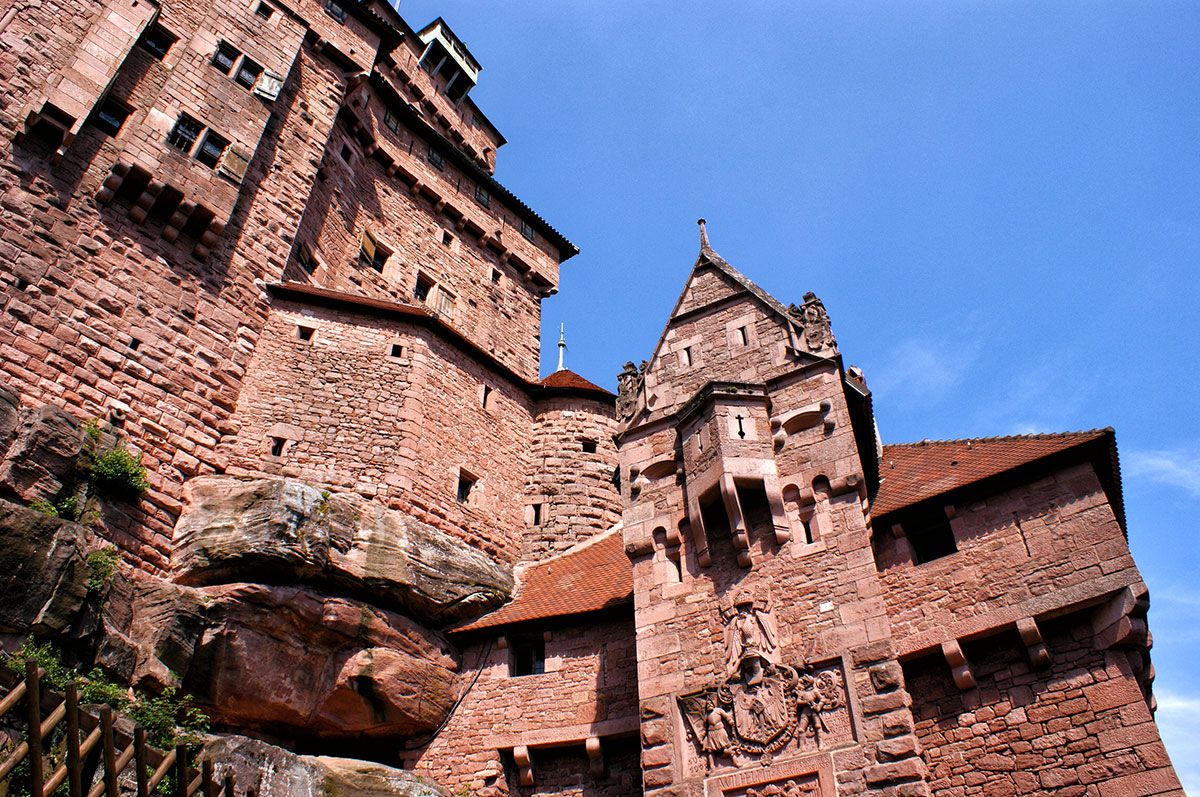
The castle's must-sees
The Haut-Koenigsbourg castle is today an essential tourist place in Alsace. It can be visited all year long. Admission is charged for adults (9€) and children (5€), free for children under 6 years old or holders.
I advise you to bring a good pair of shoes, a jacket or a sweater. It is rather cool inside, even in summer. The visit lasts about 2 hours because there are so many things to see:
- The mill, the inner courtyard and its spiral staircase
- The imperial kitchens of Wilhelm II with a very modern equipment for the time (ice chest, stove with hot water tank, sink with mixer tap). They are only visible during special tours.
- The weapons room will fascinate the little knights in the making. There are armors and a beautiful collection of weapons of the Middle Ages such as clubs, halberds or swords.
- The Kaiser's Hall or Festival Hall is richly decorated with murals and a huge eagle, symbol of the empire, on the ceiling.
- The large bastion is the most fortified area of the castle. It offers a perfectly clear view on the plain, the Vosges mountains and the Schwartzwald (the forest in Germany near the border). There is a beautiful collection of cannons from the 16th and 17th centuries.
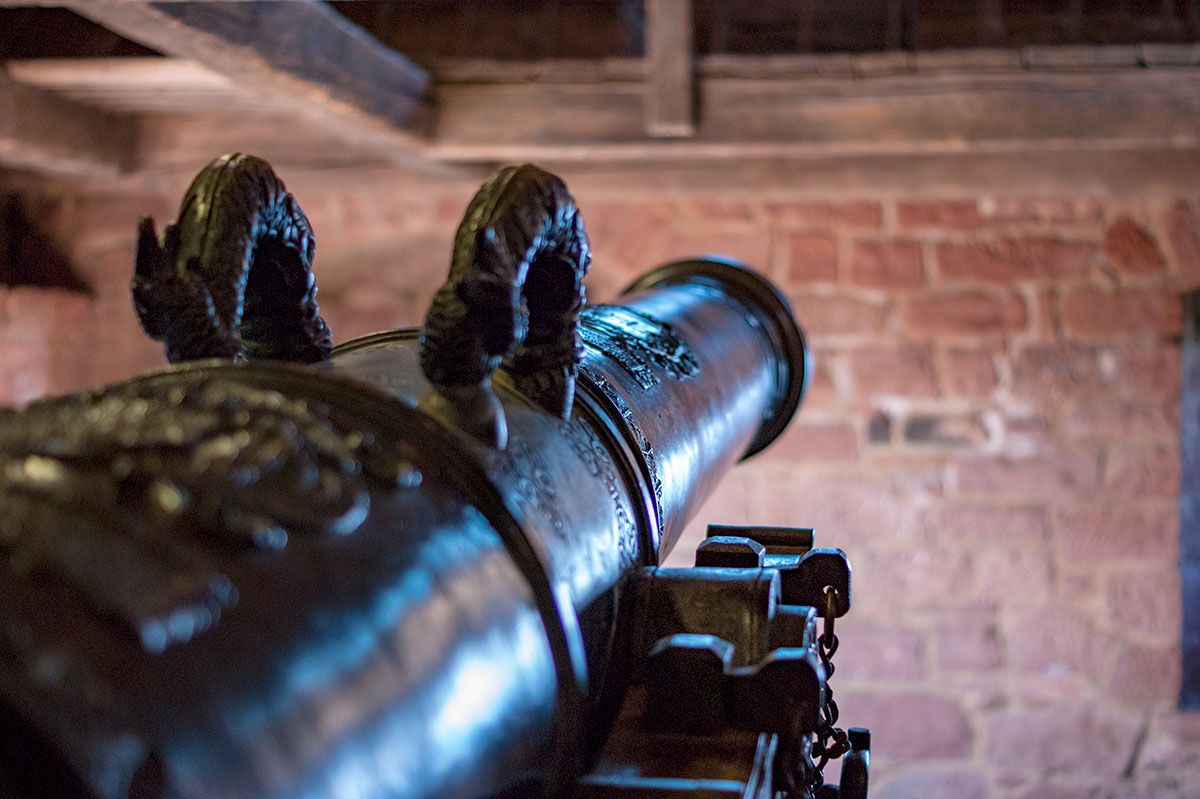
Strasbourg to Haut-Koenigsbourg castle: how to get there?
The castle is located at :
- 55 km south of Strasbourg.
- 26 km north of Colmar.
- 12 km west of Sélestat.
It is accessible by car from the A35, exit 17 via Kintzheim or exit 18 via Saint-Hippolyte. There is a free parking lot with 150 car spaces.
There's also a shuttle bus from the Sélestat train station. The price of the ticket is compensated by a discount on the entrance of the castle!
For the more adventurous or sporty, there's even a parking lot for bikes and horses.

Pass Alsace : The Best of Alsace in your Pocket
Enjoy free entry to over 60 tourist sites, including wildlife parks, fortified castles, museums, and more fun activities and discounts in Alsace.

